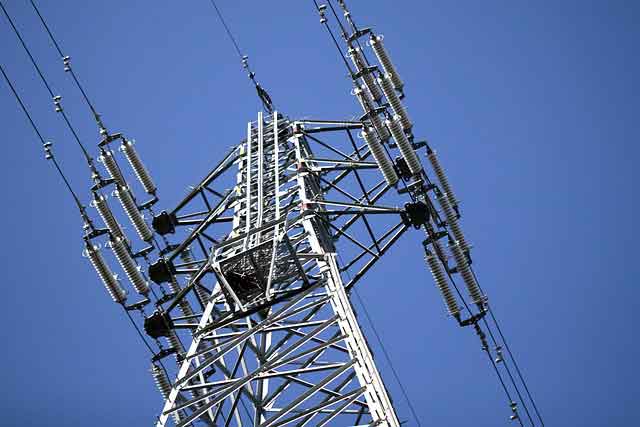Energy companies highlight Smart Grid initiative
In addition to the NYISO—which oversees the state’s bulk transmission grid—other utilities and transmission owners participating in the DOE-backed Smart Grid initiative included Consolidated Edison Company of New York National Grid USA Orange and Rockland Utilities, Inc. Rochester Gas and Electric Corporation Central Hudson Gas & Electric Corporation. New York State Electric and Gas Corp. the Power Authority of the State of New York and the Long Island Power Authority.
The DOE provided additional Smart Grid grants to independent system operators, transmission companies and other utilities across the United States to install more than 800 networked PMUs to help the country avoid future disturbances like the 2003 Northeast regional blackout.
The Smart Grid technology being implemented as part of this grant will modernize the electric grid by adding valuable tools, such as phasor measurement units PMUs, for measuring and reporting system conditions and providing enhanced voltage stability through the installation of capacitor banks in key areas on the bulk electric transmission system.
The Smart Grid DOE/NYISO work underway at Orange and Rockland Utilities O&R includes the installation of one capacitor bank at each of two substations for a total of 48.6 MVAR. The capacitor banks are used to control voltage on the transmission system, thereby increasing efficiency of the overall transmission system.
A 32.4 MVAR two-stage capacitor bank already has been sited at the Snake Hill Substation in West Nyack, New York. Snake Hill is O&RÂ’s new 138 to 13.2kV substation and incorporates a variety of Smart Grid technologies. The capacitor bank will be installed on the 138kV bus at the substation.
A 16.2 MVAR capacitor bank is due to be sited this month at the Harriman Substation which is located in the village of Harriman, New York. The capacitor bank will be installed on the 69kV bus at the substation.
The goal of both these projects is to reduce electric system losses thereby improving the efficiency of the entire transmission system. The reduction of losses will improve the overall system power factor and, over time, decrease the import of reactive power from adjacent systems.
Reducing the energy losses of the transmission system will translate to energy savings for customers of O&R in particular, and New York State as a whole. In the long run, these savings, when taken collectively, can potentially defer or even offset the costs of system upgrades in the transmission system and the bulk electric system in the New York control area and can even lower customer electric bills.
Both the Harriman and Snake Hill capacitor banks were manufactured by General Electric in Fort Edward, N.Y. The Harriman capacitor bank cost $35,000 while the Snake Hill capacitor bank cost $65,000. This is the cost of the capacitor bank only and does not include the other equipment or labor necessary to place the capacitor in service. The total cost for the Harriman capacitor installation is $904,000. The total cost for the Snake Hill capacitor installation is $600,000.
O&R President and CEO Bill Longhi said, “The new Smart Grid communications technologies permit us to exercise broader and more precise control over the electric system. That means the system can do its job of delivering power in a more efficient manner, resulting in lower cost and reduced environmental impact.”
The capacitor banks are designed to improve the efficiency of the bulk transmission system by reducing the amount of electricity that is lost when carried over long distances, thus reducing electricity costs in New York by approximately $7.6 million per year.
Meanwhile, the data provided by the PMUs will improve grid operators’ ability to catch irregularities or predict problems and take corrective action to maintain reliability of electric service to New York state customers. The technology will relay system conditions at a rate of 60 times per second—360 times faster than previously available.
Eventually, the NYISOÂ’s PMU network will connect with PMU networks in New England, the mid-Atlantic, the Midwest and Ontario, Canada, to create broader situational awareness throughout the eastern U.S. and Canada.
Garry Brown, Chairman of the state Public Service Commission, said: “As the state regulator, the PSC wants to ensure that the potential investments required for the Smart Grid will enhance the reliability of our electric transmission and distribution systems, maximize New York’s economic competitiveness, and continue to maintain just and reasonable rates.”
The Smart Grid initiative will improve the efficiency of New YorkÂ’s bulk grid, which consists of hundreds of generating units and thousands of miles of high-voltage transmission lines. Completion of the Smart Grid projects will allow the NYISO to better fulfill its core mission of maintaining reliability of the stateÂ’s bulk power system and operating economically efficient wholesale markets.
Related News

Recommendations from BC Hydro review to keep electricity affordable
VANCOUVER - The Province and BC Hydro have released recommendations from Phase 2 of the BC Hydro Review to keep rates affordable and encourage greater use of clean, renewable electricity to reduce emissions and achieve climate targets.
“Keeping life affordable for people is a key priority of our government,” said Bruce Ralston, Minister of Energy, Mines and Low Carbon Innovation. “Affordable electricity rates not only help British Columbians, they help ensure the price of electricity remains competitive with other forms of energy, supporting the transition away from fossil fuels to clean electricity in our homes and buildings, vehicles and businesses.”
While affordable…





